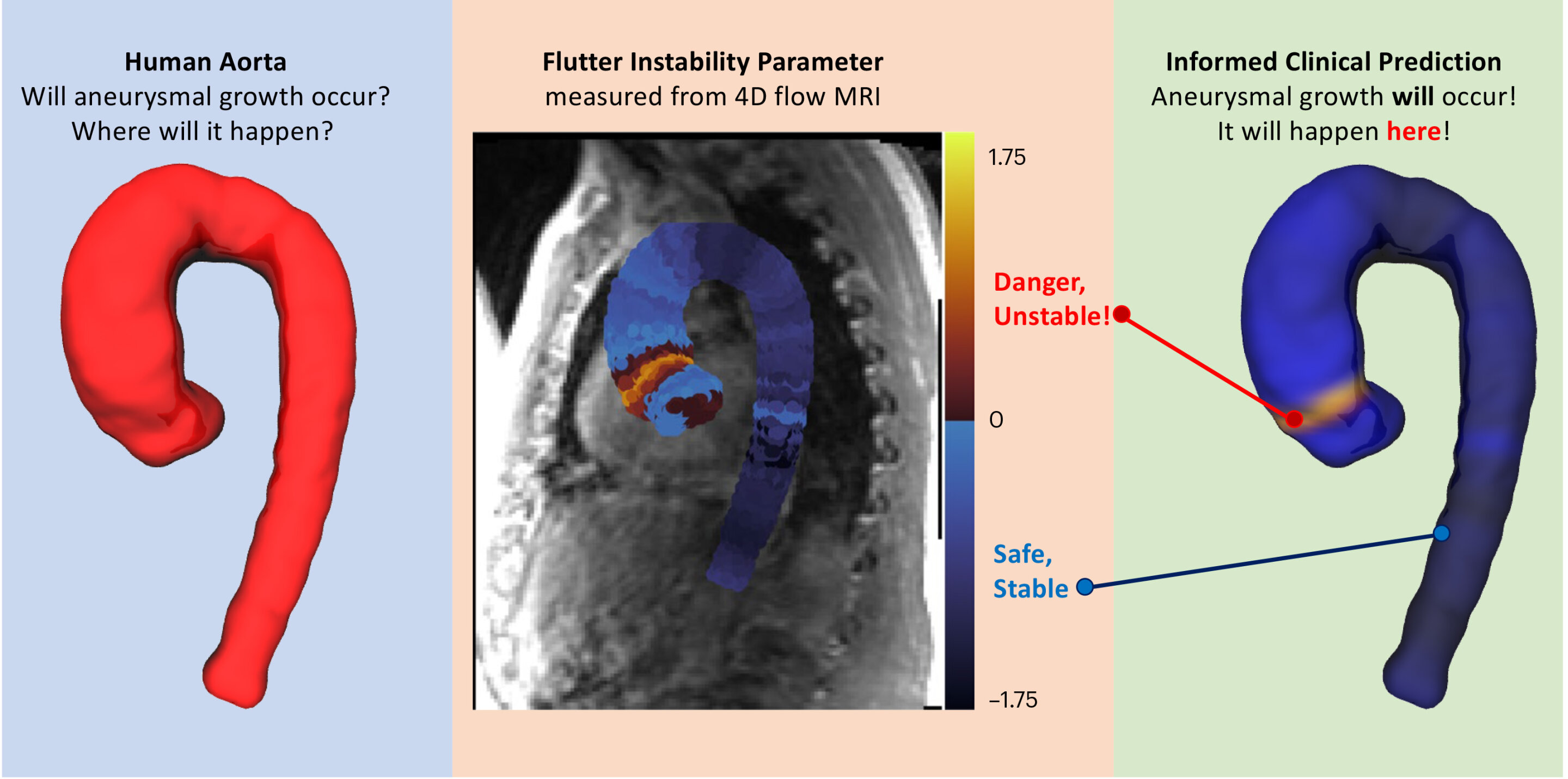Northwestern University researchers have developed the first physics-based metric to predict whether or not a person might someday suffer an aortic aneurysm, a deadly condition that often causes no symptoms until it ruptures.
In the new study, the researchers forecasted abnormal aortic growth by measuring subtle “fluttering” in a patient’s blood vessel. As blood flows through the aorta, it can cause the vessel wall to flutter, similar to how a banner ripples in the breeze. While stable flow predicts normal, natural growth, unstable flutter is highly predictive of future abnormal growth and potential rupture, the researchers found.
Called the “flutter instability parameter” (FIP), the new metric predicted future aneurysm with 98% accuracy on average three years after the FIP was first measured. To calculate a personalized FIP, patients only need a single 4D flow magnetic resonance imaging (MRI) scan.
The problem is that 4D MRI is expensive and not something that is done unless they are looking for something else and typically only when cheaper images don’t show what they are looking for.
Only a small percentage of people will have the problem, so not a good argument to justify screening.
Now, if they can find a way to see this with something inexpensive and accessible like ultrasound, then it would be useful for screening.
Great, but is there a way to treat them?
Of course. It’s just not much fun.



